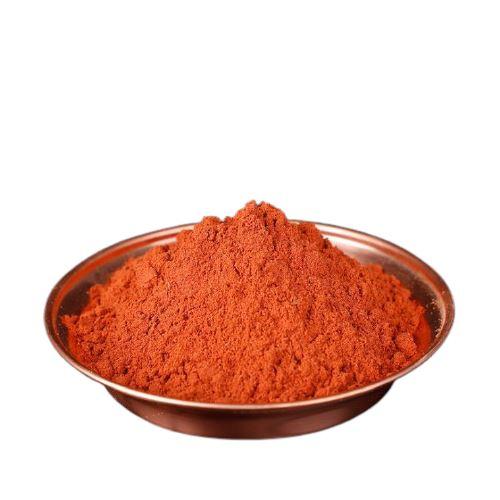Discovery of Tilak, this Point On the Indian Front
We call this strange mark, usually red, that some Indians have on their foreheads “tilak”.
More than a simple element of folklore, this is a religious custom with a deep meaning and a practice believed to bring luck.
While most people in India will only wear the tilak occasionally, some people (for example, gurus, priests or sadhus) will wear it every day of the year.
This simple fact allows us to understand the importance of tilak: it is indeed something ritual and whose religious meaning is undeniable.
Even more, we are talking here about a sign of identification with the Hindu faith and culture that thousands of people respect, thus feeling like they belong to the same community.
The tilak can in fact be seen as a rallying sign for all Hindus in the world, who are the only ones to know a comparable tradition.
Seen like that, a simple dot of paint on the forehead immediately takes on a deeper meaning... at least, deep enough for us to give it an article, don't you think?
Contents :

Why do Indians wear tilak?
As we have just said, the tilak (from Sanskrit “tilaka”, literally meaning “mark”) is a mark made on the forehead whose purpose is to mark a person's membership in a group.
Most of the time, Indians will choose to make a tilak to mark their attachment to their country or their religion. However, there are certain particular models (which we will discuss a little later in the article) relating to certain more “confidential” groups.
In fact, you should know that Hinduism considers the human body as something sacred. In particular, the energy of the chakras is found within it.
Chakras are basically energy centers that, when balanced, allow human beings to experience better life and greater well-being.
The chakra corresponding to the forehead (and therefore the one on which the tilak acts) is known as “Sahasrar”, or “crown chakra”.
Hinduism is truly an amazing religion. To learn more about her, here is a collection dedicated to her mysteries and secrets.
In short, by drawing certain religious symbols in the right place, we can act on these chakras. .. Interesting!
As an aside, it is also amusing to note that certain statues of Hindu deities have their foreheads marked with a tilak. In this case, it often symbolizes a sort of “third eye”, and therefore notions of clairvoyance and truth.
The rules for correctly drawing a tilak
Like everything related to religion, the tracing of tilak is governed by precise rules and rituals which must be respected if we want to remove all its powers.
Here are the main rules:
- Firstly, a tilak must be done by hand and, more precisely, using the middle finger. Indian tradition describes this finger as connected to the energy of the heart and carrying its vibrations. This way of doing things symbolically (but not only) allows us to connect our heart chakra to that of the crown.
- The most frequently used materials are sandalwood powder (which we offer here) and clay, although spices or ashes can also be used.
- The color should normally be red. Some specialists believe that this is an allusion to blood, and therefore to life itself. Others believe that red is the color of strength in Hinduism.
- For the tilak to work as best as possible, it must be centered on the center of the root chakra, but above all it must be perfectly symmetrical.

Different types of tilak for different meanings
We told you about it at the start of the article: the tilak is used by many groups as a mark of belonging and symbol of identification.
In a caste society like in India (here is an article that tells you about this type of society ), the different groups are clearly separated from each other. Certain tilak designs are used to mark which caste individuals belong to.
Other designs can even be used to show others which branches of Hinduism we are a part of. There are indeed dozens of different sects and religious paths in Indian culture. Here you will find a summary of the main Indian spiritual paths.
In short, there are different models with sometimes very varied sizes, shapes and colors.
Here is a list (not exhaustive of course) of the few types of tilak that you will most likely encounter:
- The basic tilak, consisting of a simple straight vertical line
- The Brahmin Tilaka, which doubles this line
- The Kshatriya Tilaka, shaped like a half-moon with a point at its center
- The Vaishya Tilaka, made of three slightly curved horizontal lines topped by a point
- The Shudra Tilaka, formed from a simple point on the forehead
- The Urdhva-Pundra, U-shaped which sometimes goes down to the nose
- The Tripundra, similar to the Vaishya Tilaka but made of sacred ashes.
Lucky charm featured in this article

Sandalwood Powder
See more

